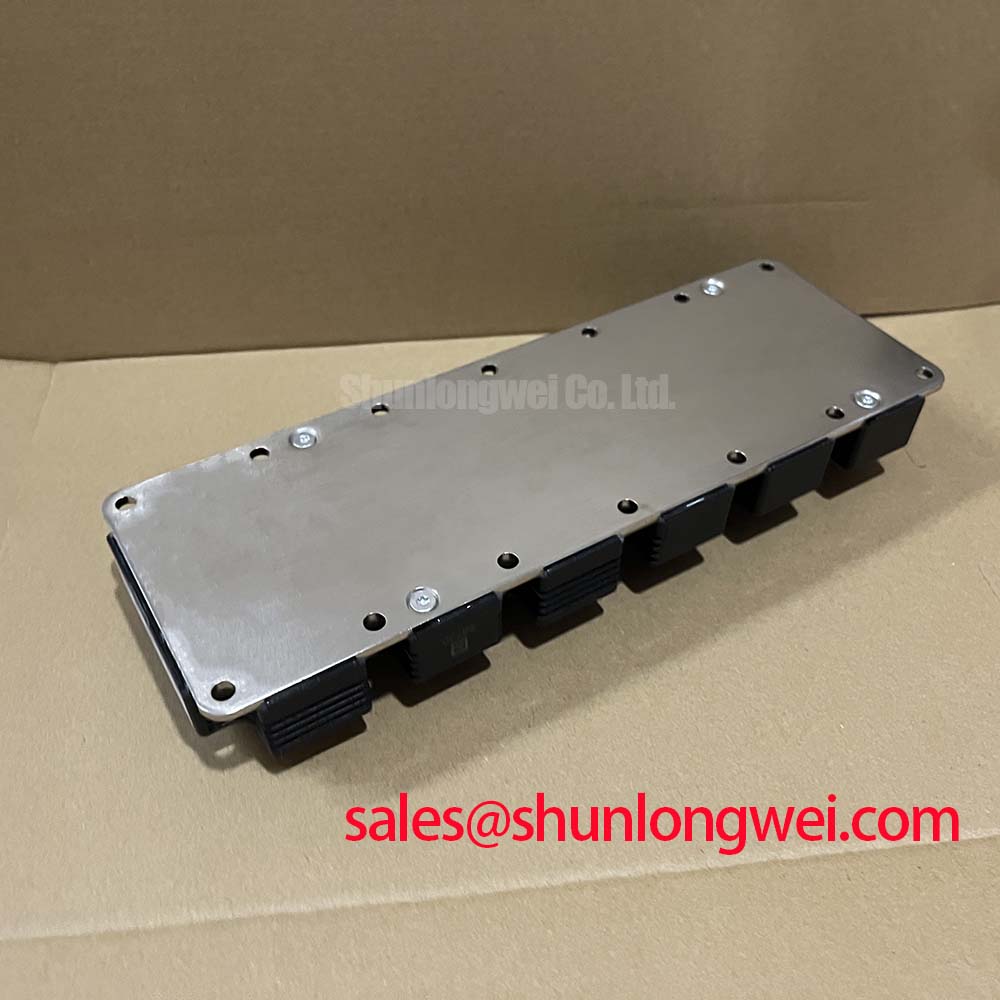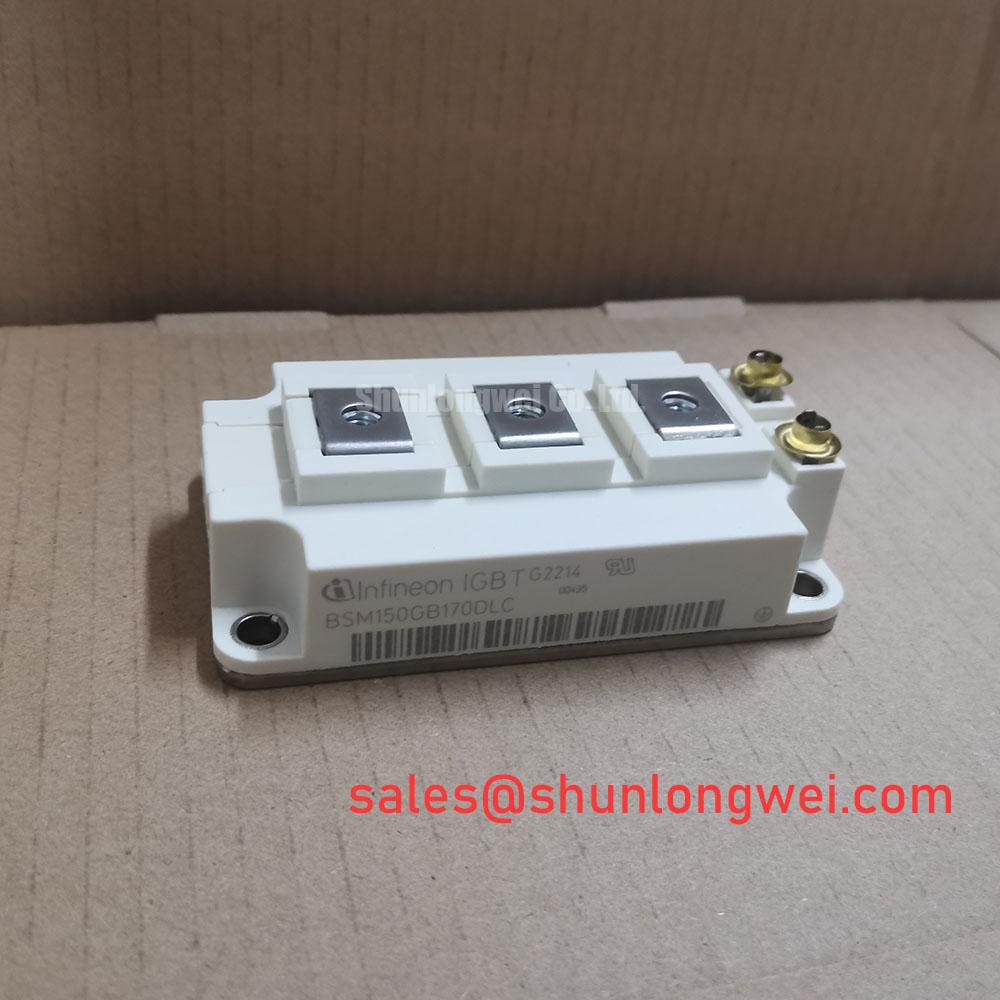Content last revised on November 7, 2025
FF1000R17IE4 IGBT Module: Technical Data & Applications for 1700V/1000A Power Systems
Introduction and Key Highlights
Defining High-Power Conversion with Enhanced Thermal Stability
The Infineon FF1000R17IE4 is a high-power EconoDUAL™ 3 IGBT module engineered for exceptional reliability and efficiency in megawatt-scale power conversion systems. It delivers a robust specification profile of 1700V | 1000A | VCE(sat) 2.15V (typ.), providing significant performance headroom for demanding applications. Key engineering benefits include superior thermal management and optimized switching characteristics. This module directly addresses the challenge of designing reliable high-voltage inverters by offering a substantial safety margin and predictable performance up to its maximum operating temperature. For high-power three-level NPC topology inverters prioritizing thermal resilience and efficiency, this 1700V module is a strategic component choice.
Application Scenarios & Value
Delivering Megawatt Performance in Renewable Energy and Industrial Drives
The FF1000R17IE4 is engineered for high-stress, high-power applications where reliability is paramount. Its primary value is demonstrated in systems like large-scale wind turbine inverters, central solar inverters, and high-power industrial motor drives. In these environments, DC-link voltages can be subject to significant fluctuation, especially during dynamic grid conditions or load changes.
A key engineering challenge in these systems is ensuring the power semiconductor can withstand potential overvoltage events without failure. The 1700V collector-emitter blocking voltage of the FF1000R17IE4 provides a critical safety margin for systems operating with high DC bus voltages (e.g., derived from a 690V AC line), enhancing the long-term reliability of the entire converter. This robust voltage rating, combined with its 1000A current capability, makes it a cornerstone component for building efficient and durable megawatt-class power stages. For systems requiring even greater current handling, the related FZ1200R17HE4 offers a step-up in capacity within a comparable voltage class.
Key Parameter Overview
Decoding Key Specifications for Thermal Management and Efficiency
The technical specifications of the FF1000R17IE4 are tailored for high-power density and operational efficiency. The parameters below highlight its capacity for robust thermal and electrical performance, which are critical for system-level design and reliability analysis.
| Parameter | Value | Conditions |
| Collector-Emitter Voltage (VCES) | 1700V | Tvj = 25°C |
| Continuous Collector Current (IC nom) | 1000A | TC = 80°C |
| Collector-Emitter Saturation Voltage (VCEsat) | 2.15V (typ.) / 2.65V (max.) | IC = 1000A, VGE = 15V, Tvj = 150°C |
| Thermal Resistance, Junction-to-Case (RthJC) per IGBT | 0.021 K/W (max.) | DC |
| Operating Junction Temperature (Tvj op) | -40 to +150°C | - |
| Gate-Emitter Threshold Voltage (VGE(th)) | 5.8V (typ.) | IC = 36.0 mA, VCE = VGE, Tvj = 25°C |
Download the FF1000R17IE4 datasheet for detailed specifications and performance curves.
Technical Deep Dive
A Closer Look at the Thermal Architecture and IGBT4 Technology
The performance of a high-power module like the FF1000R17IE4 is fundamentally linked to its thermal design and the underlying silicon technology. The maximum thermal resistance from junction to case (RthJC) of 0.021 K/W for the IGBT is a critical parameter. This value quantifies how efficiently heat generated within the silicon can be transferred to the heatsink. A lower RthJC is analogous to a wider pipe for heat flow; it allows for more effective cooling, enabling the device to handle higher power loads without exceeding the critical maximum junction temperature of 150°C. This superior thermal management is essential for achieving high power density and ensuring long-term operational reliability.
This module utilizes Infineon's Trench/Fieldstop IGBT4 technology, which represents a well-established balance between conduction and switching losses. The low typical VCE(sat) of 2.15V at full rated current and high temperature directly reduces conduction losses, which are the primary source of heat in applications with low switching frequencies. This efficiency is a core reason for its suitability in grid-tied inverters and large motor drives. What is the benefit of a low VCE(sat) value? It directly translates to lower power dissipation and reduced cooling system requirements. This allows designers to optimize heatsink size, potentially reducing system cost, weight, and complexity.
Frequently Asked Questions (FAQ)
How does the 1700V collector-emitter voltage rating benefit high-power inverter design?
The 1700V rating provides a crucial safety margin against voltage transients and overshoots on the DC bus, which are common in high-power applications like wind turbines and industrial drives. This enhances the system's robustness and long-term reliability, preventing catastrophic failure due to grid instability or inductive load switching.
What is the engineering significance of the Tvj op rating of 150°C?
An operating junction temperature up to 150°C allows the module to function reliably under demanding thermal conditions. This high-temperature capability enables designers to achieve higher power density, as more power can be dissipated in a smaller footprint. It also provides more thermal headroom, making the system more resilient to ambient temperature fluctuations or temporary cooling system inefficiencies.
How does the low VCE(sat) of 2.15V (typ.) impact system efficiency and thermal design?
A low collector-emitter saturation voltage (VCE(sat)) directly reduces the power lost as heat during the on-state (conduction losses). In a 1000A application, this leads to significant energy savings and less heat generation. Consequently, a smaller, less expensive heatsink and cooling system may be used, reducing the overall bill of materials and physical volume of the power converter.
Is the FF1000R17IE4 suitable for parallel operation to achieve higher current?
Yes, modules like this are often designed for paralleling. However, achieving balanced current sharing is critical. The positive temperature coefficient of VCE(sat) in IGBT4 technology provides a degree of self-balancing. For successful implementation, designers must ensure symmetrical busbar layout and carefully matched gate driver signals, as detailed in application notes on IGBT Paralleling.
Strategic Considerations for System Integration
Integrating the FF1000R17IE4 into a power system requires a strategic approach focused on maximizing its capabilities. Engineers should leverage its high voltage rating not just as a safety feature but as an enabler for higher DC-link voltages, which can reduce I²R losses in cabling and busbars. The module's robust thermal performance, underscored by its low RthJC and high Tvj op, should inform the thermal design, allowing for compact and cost-effective cooling solutions. By focusing on these core strengths, design teams can develop highly reliable and power-dense converters that meet the stringent demands of the renewable energy and industrial automation sectors.
















